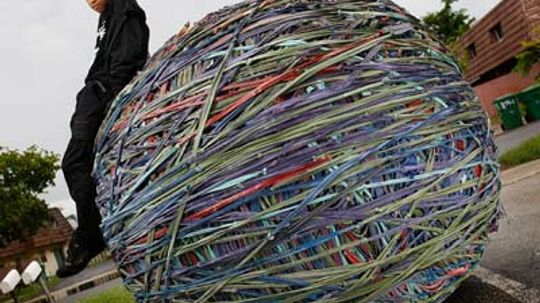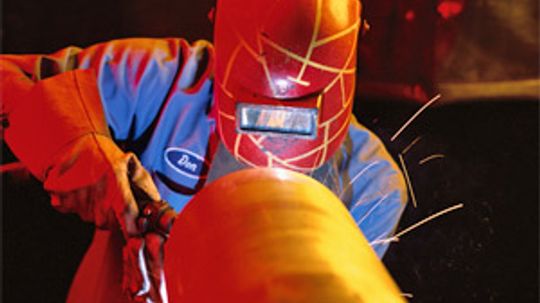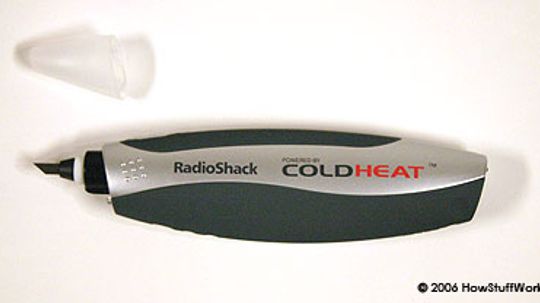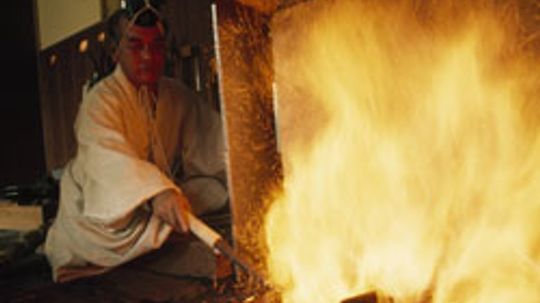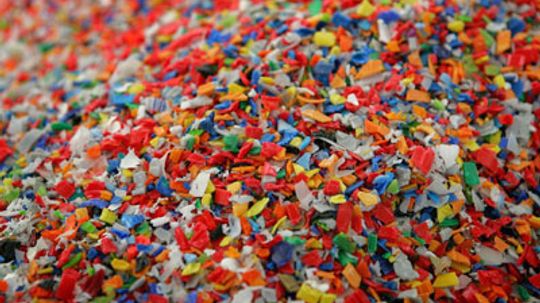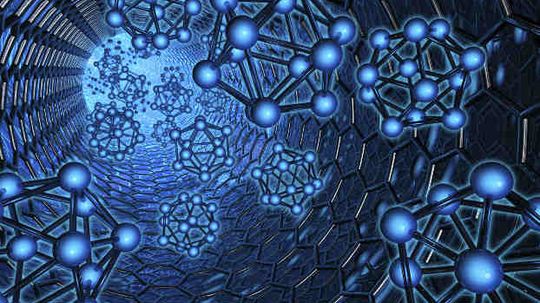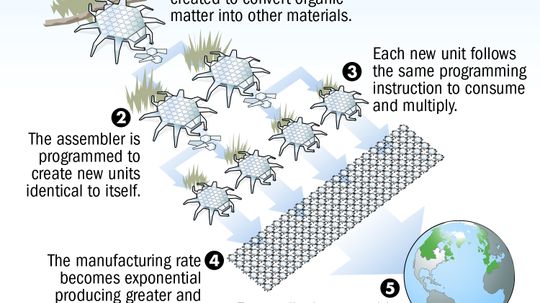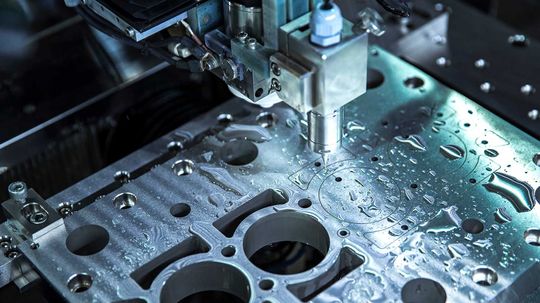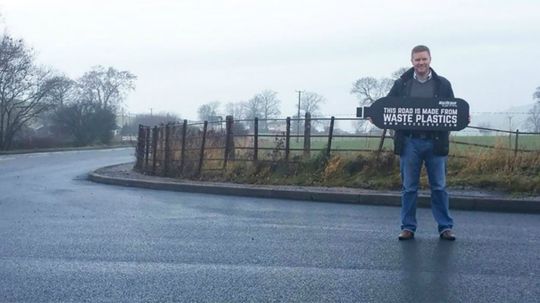Materials Science
Explore how the use of natural and manmade materials further technology. Read articles on subjects such as nanotechnology, iron steel and reverse osmosis.

The World's Most Awe-inspiring Glass Buildings

10 Innovative Architects to Watch

16 World-Famous Architects and Their Impact

10 Advancements in Environmental Engineering

How Zambonis Work

What Countries Use the Imperial System?

Science and Nature: Fractals
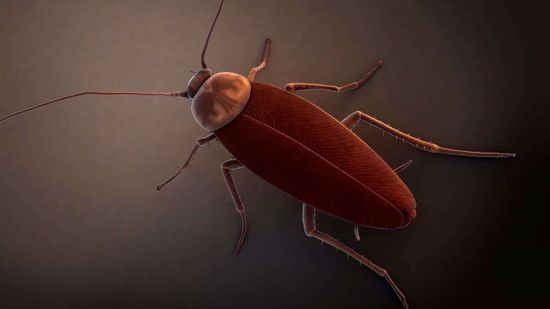
Your Thoughts Could Activate a Tiny Robot Inside Your Own Brain

How Star Wars Works: Fan-built Droids

Robot Pictures

What's the Largest Pyramid in the World?

Why are blueprints blue?

10 Women Who Broke New Ground in Engineering
Learn More
Once upon a time, food was used for one thing: eating. Today, it has a much more complicated role. And one of those roles might be serving as an upstart in the world of plastics.
Steam technology powered the Industrial Revolution, transformed the global shipping industry and revolutionized modern warfare. But how do steam engines actually harness the power of steam?
By Robert Lamb & Yara Simón
Turning saltwater into tasty, drinkable H20 at desalination plants is probably the biggest-selling point of reverse osmosis, but let's back up a minute. What's osmosis, and why — and how — is reversing it useful to us?
Advertisement
Charles Goodyear was obsessed with this stretchy material, and we are, too. It's weatherproof, shockproof and entertaining, and it's found in more products than you can shoot a rubber band at.
For a process that simply bonds two pieces of metal, welding affects a lot of our world and some stuff that's out of this world, like the International Space Station. What's it like to man the torch?
Nanotechnology is so new, no one is really sure what will come of it. Even so, predictions range from the ability to reproduce things like diamonds and food to the world being devoured by self-replicating nanorobots.
By Kevin Bonsor & Jonathan Strickland
As an invention, Cold Heat seems to have everything. But reviewers -- both professionals and average users -- either love the tool or hate it, and some people question whether it's really "new" at all.
Advertisement
The centuries-old art of sword making involves incredibly intricate metal work, and it's still being practiced today. Get a rare glimpse into the creation of this ancient weaponry.
By Jeff Tyson
The refining of iron ore is one of our most historically significant achievements. The element is so important that primitive societies are measured by the point at which they learn how to refine it.
This not-so-new material looks like a hologram and could play a valuable role in the future of insulation, electronics, oil spill cleanup and green energy. So why don't aerogels have the A-list name recognition they deserve?
Versatile and efficient, electroluminescent (EL) wire is widely used by artists to illuminate clothing, bicycle spokes, turntables and even cars. But how does this cool product work with so little power and without a visible energy source?
Advertisement
Plastics can be shaped or molded into any form, and they're everywhere -- in your car, computer, toys and even bubble gum. But because they don't degrade, they cause big problems when it's time to throw them out.
Welcome to the wonderful and weird world of nanowires. Scientists can adapt this incredibly thin material for a number of uses, whether as a fiber-optic nanowire or to build increasingly smaller microprocessors. They're even used in medical implants.
Dyneema is trademarked as the world's strongest fiber. Find out how this high-strength synthetic is capable of protecting an individual (or an entire vehicle) from IEDs or even shots fired from an AK47.
Sports injury taping has undergone a quiet revolution over the last 30 years. How can a pattern of tape stuck to your body help you heal from (or prevent) an injury?
Advertisement
Nanotechnology is one of the hot buzzwords of the 21st century. You know that it has to do with things that are very small, but just what are the implications of technology on the molecular scale, anyway?
If people could create nanomachines, they might be able to help fight diseases on the molecular level. They might even be able to replicate themselves. But what happens if that process gets out of hand?
Crumpling is a physical process that occurs when a thin sheet is forced to adapt to a smaller space and is seen in everything from DNA packing in a cell nucleus to the formation of mountains.
Building bicycles with environmentally friendly bamboo is an idea whose time has come. We talk to a master bamboo bike builder about the ins and outs.
By Carrie Tatro
Advertisement
Nearly everything you use in your life was touched by a CNC machine tool. Don't know what a CNC machine tool is? We'll explain.
By Mitch Ryan
If you think asphalt is what hot tar roads are made of, you'd be wrong. Asphalt is only one ingredient in the recipe that makes up our roads. And it has a very long, very interesting history.
You think stainless steel is a strong metal. So would it surprise you to learn it can't hold an edge when it comes to your hair?
Researchers in China have developed a non-toxic "smart" wallpaper that won't burn and triggers an alarm when it gets hot.
Advertisement
Plastic road materials-maker MacRebur is paving the way to a greener environment, using recycled waste to build roads.
Glass ionomer cement is a kind of cement used in restorative dentistry. Learn what glass ionomer cement is in this article.



